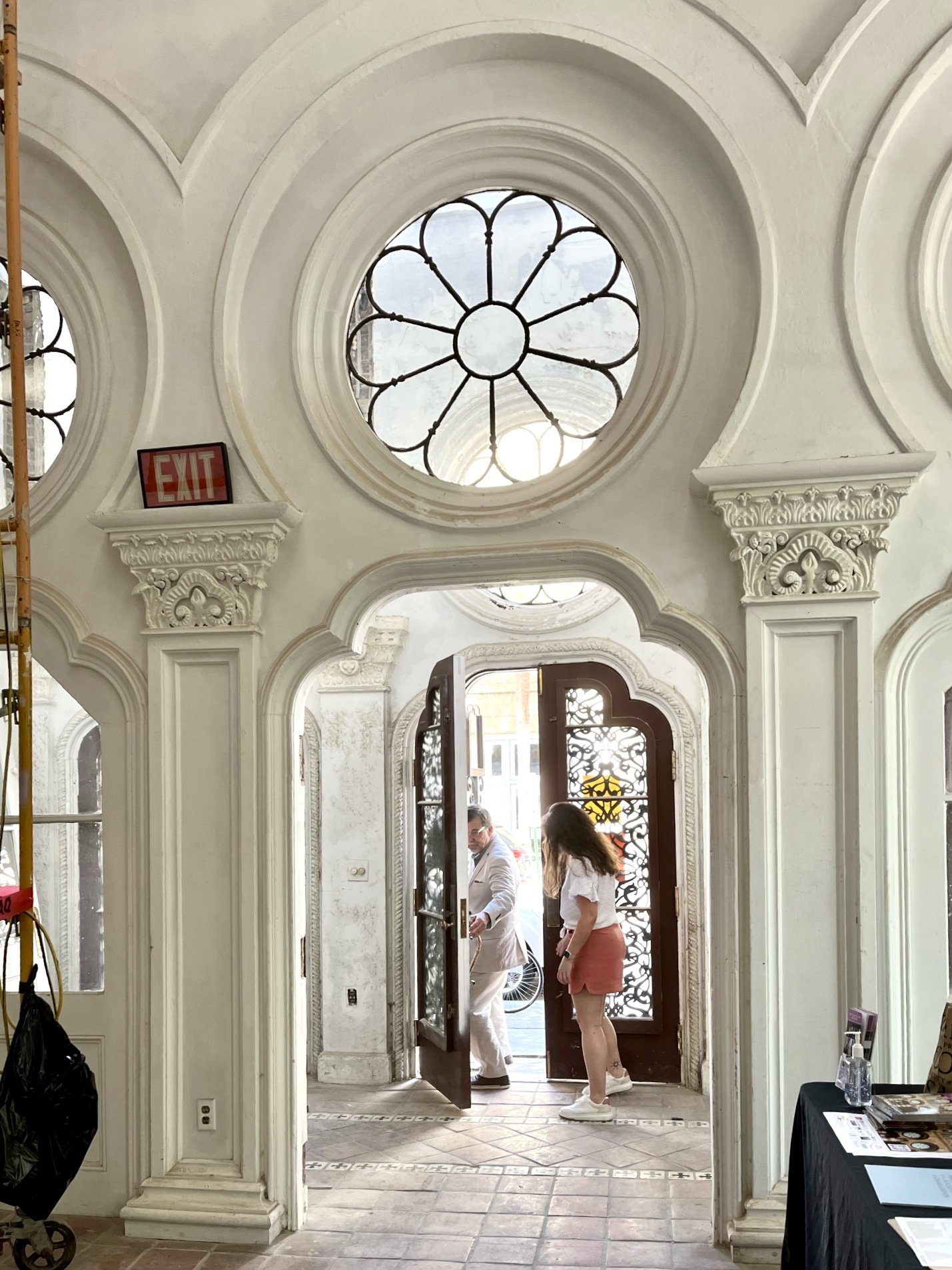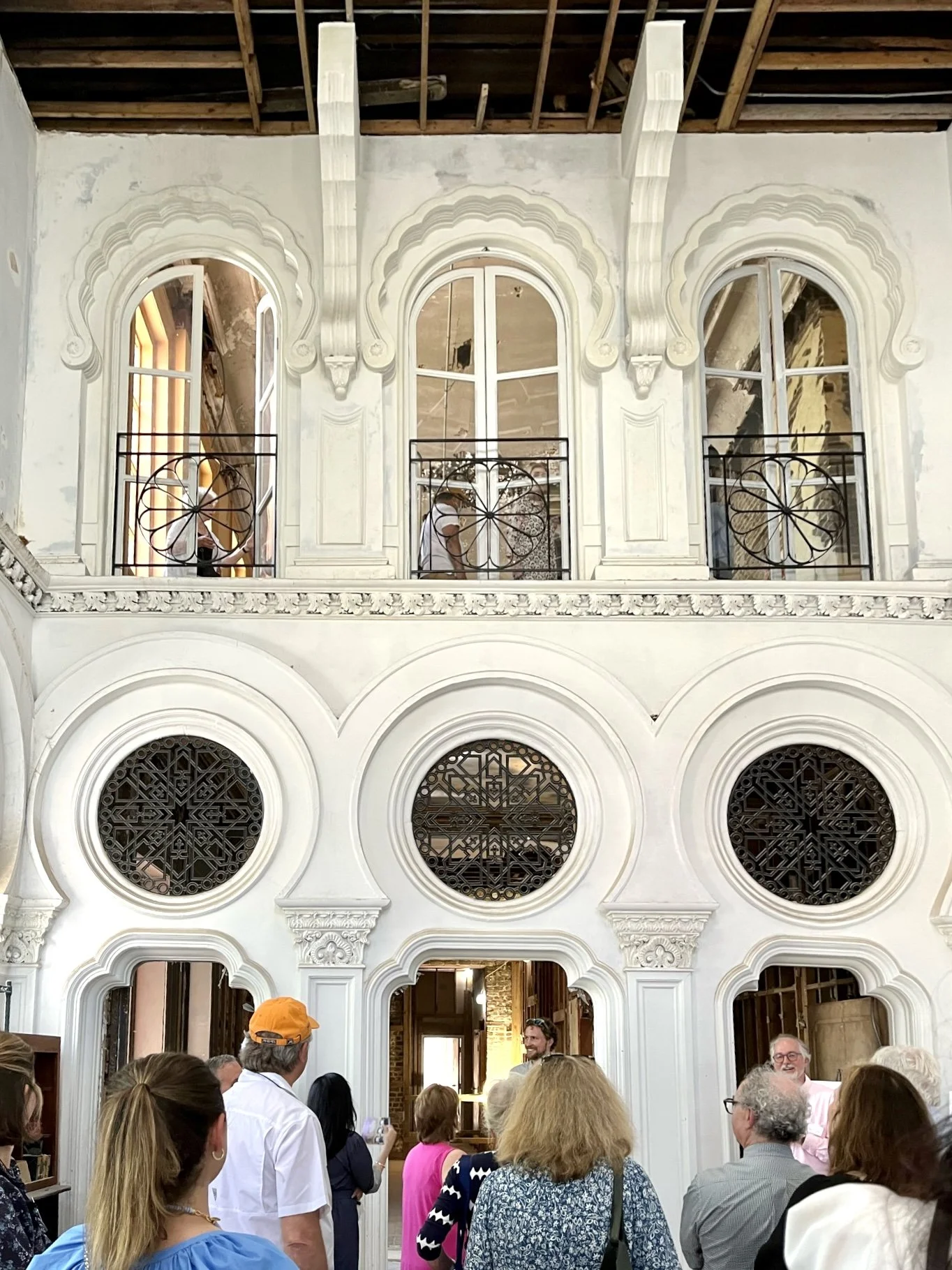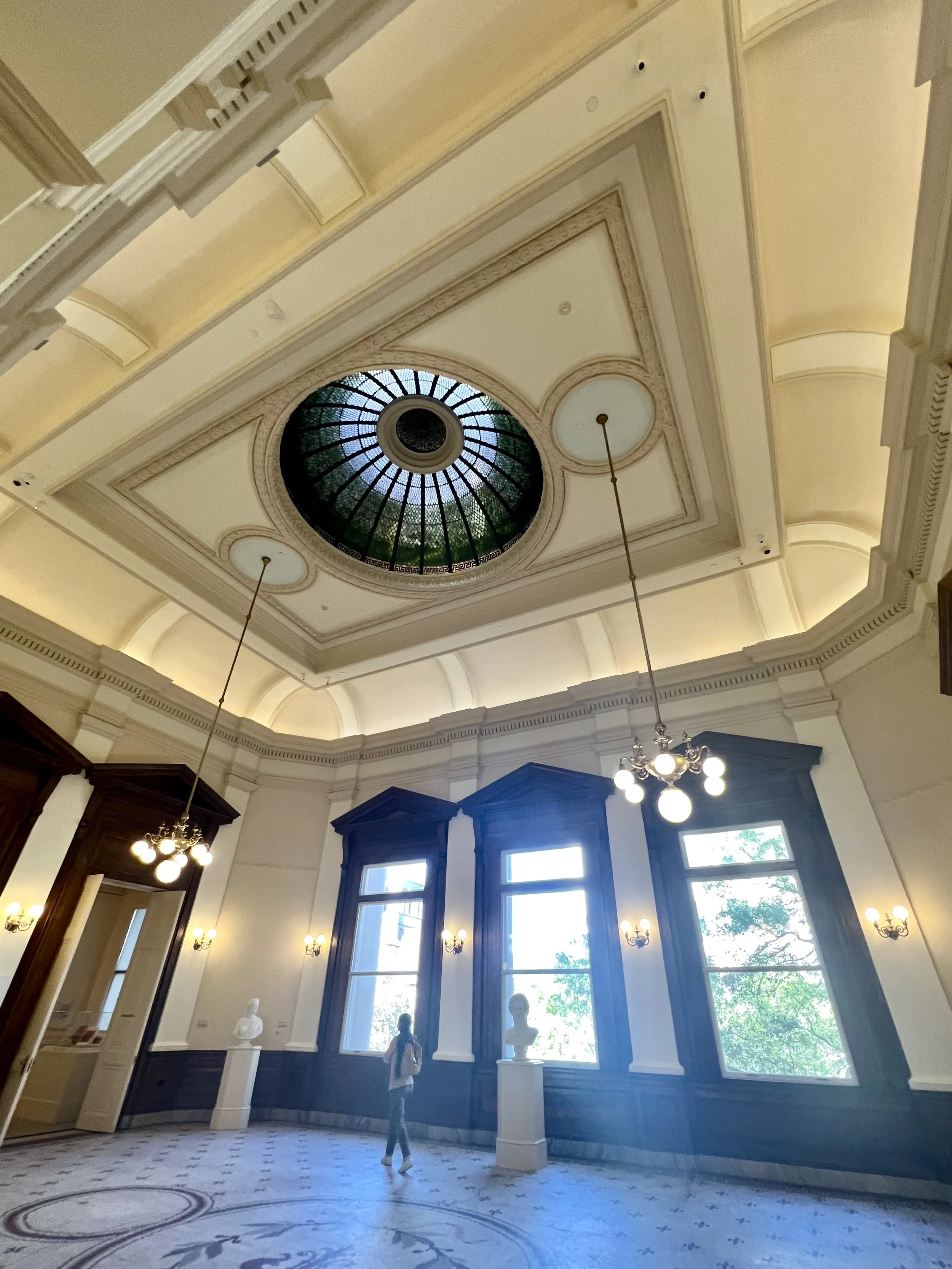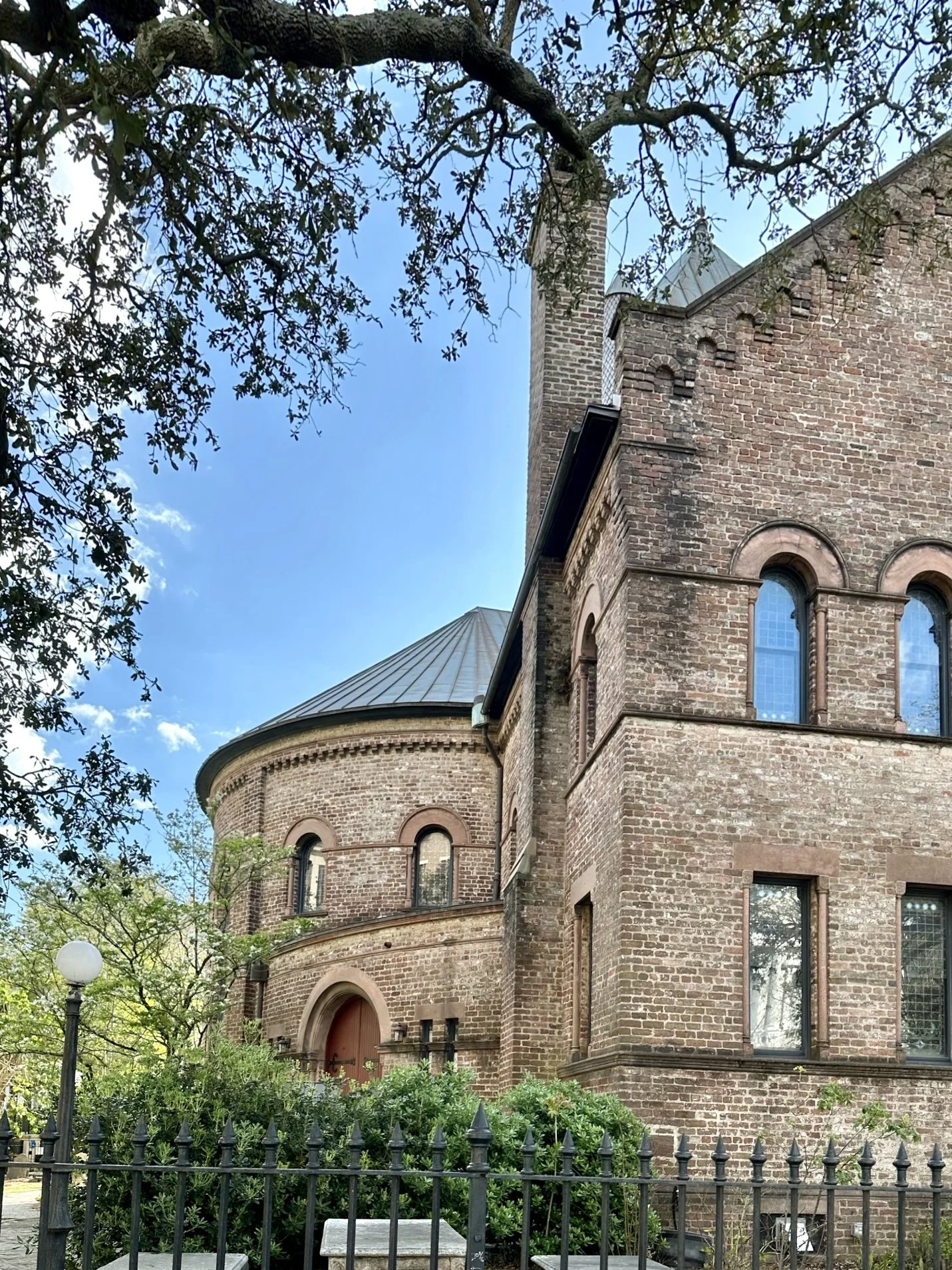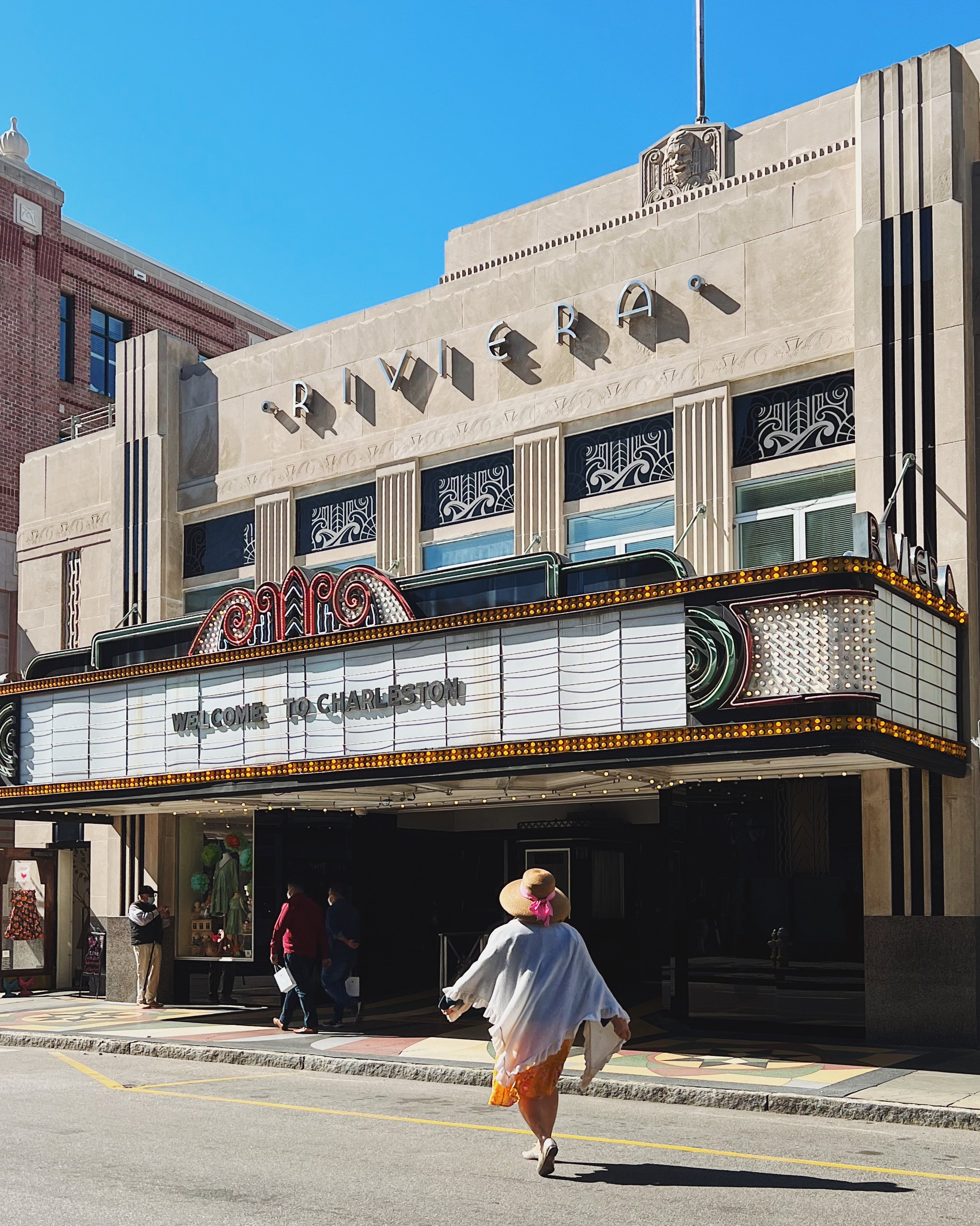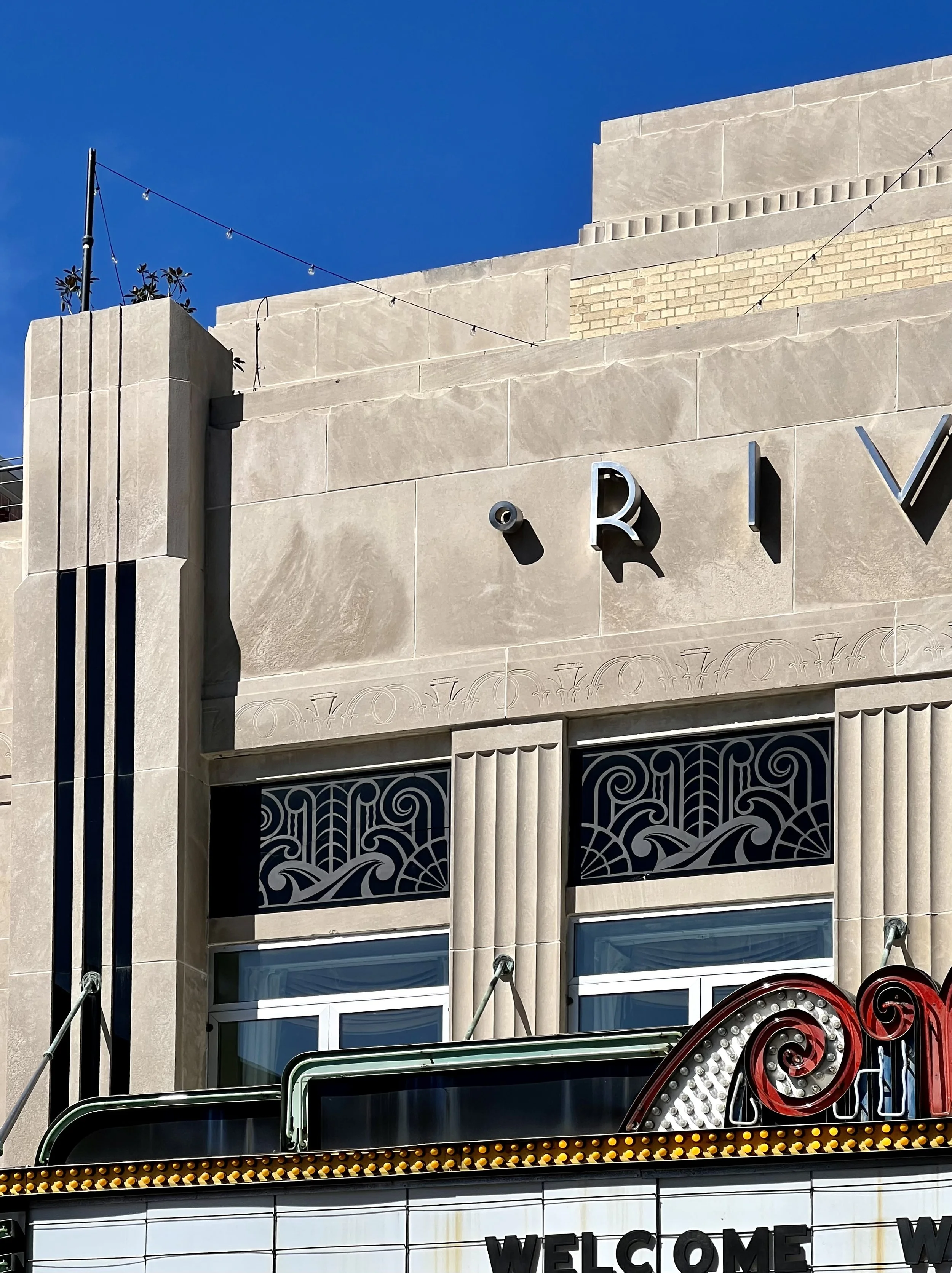Architectural History of Charleson: 20th Century & Stylistic Outliers
Charleston is best known for its Antebellum architecture, and for good reason - the Holy City is home to one of the largest and oldest historic districts in the country. But you’ll also find an incredible sampling of different architectural styles, from those inspired by Byzantine churches, to French Neo-Classical, to striking Art Deco. From the latter half of the 19th century through much of the 20th, Charleston saw great political, economic, and social upheaval - and this is reflected in the city’s unique architectural fabric. These are some of the architectural styles that occur less frequently - or only once - in Charleston, but of which we boast fabulous examples.
Moorish Revival (ca. 1840s - 1900)
Inspired by the architecture of Islamic cultures and those of Northern Africa, Moorish Revival architecture peaked in popularity in the United States in the late 19th century. This movement was highly uncommon in the South, but there is a gorgeous example here in Charleston in the Farmer’s & Exchange Bank building located on East Bay street. Completed in 1854, this building utilizes muquarnas (heavily ornamented vaulting, also called honeycomb vaults, common in Islamic architecture); circular windows with ornate tracery elements; and shorsehoe- and keyhole-shaped arches. The building is clad in polychromatic brownstone shipped from New Jersey and Connecticut. This distinctive building was originally a bank, but is undergoing restoration to become an event space. Tyler got to explore on a hard hat tour with the Preservation Society of Charleston, and loved the detailed interior!
Beaux-Arts (ca. 1890s-1920)
This style of architecture is primarily found in France, and was the academic architectural style taught at the École de Beaux-Arts in Paris throughout the latter half of the 19th century. It’s inspired by French Neo-Classicism and incorporates baroque and Romantic elements. The style is less common in the United States, but the Gibbes Museum of Art is a fine example dating to the 1850s. Note the simple columns and symmetrical façade, patterns in the brickwork, and overall sense of grandeur. We also love details such as the tiled paving, mosaic floors, and Tiffany-style stained-glass dome.
Richardson Romanesque (19th century)
The Circular Congregational church has met on Meeting Street for centuries - that’s actually how Meeting street got its name! The current building was designed by Robert Mills, whom we’ve discussed before for his Classical Revival architecture, in the 1890s. It was built in the Richardson Romanesque style, which is a revival style heavily inspired by medieval churches of western Europe and incorporating Roman and Byzantine elements. Don’t let its name deceive you - while it may look round from the outside, the footprint of the church is actually a clover-leaf shape.
Art Deco (ca. 1920s-1930s)
The Riviera Theater on King Street was constructed in the late 1930s as Charleston’s first motion-picture theater. It was built in the trending Art Deco style, which was heavily inspired by the art of Ancient Egypt, in vogue as it was being uncovered by European archaeologists in the 1920s and 30s. The theater’s façade features geometric lines and semicircular shapes; abstract, swirling patterns in its leaded glass windows; bas-relief carvings of plants and bold lines in its stonework; and brightly colored accents in its marquee and terrazzo entry.
Modern (ca. 1950s-1970s)
What is now the luxurious Dewberry Hotel was originally constructed to serve as the L. Mendel Rivers federal office building. Constructed in 1964, the seven-story structure utilized strong, straight lines and symmetrical, almost severe design. Large windows are evenly spaced with sections of red brick (now a soft, washed grey) and panels of white marble. Badly damaged by hurricanes in the 1990s, the building was saved in the early 2000s and converted to the beautiful Dewberry hotel. (Pro tip: this hotel also houses the Citrus Club, one of our favorite rooftop bars in Charleston)
You can learn more about the architectural history of Charleston - as well as enjoy entertaining storytelling and juicy historic gossip - on one of our walking tours.
Check out our other blogs on the architectural history of Charleston:
Colonial | Georgian | Federal | Classical Revival | Gothic Revival | Italianate | Victorian


